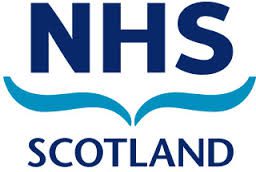NHS Scotland Chief Executive, Paul Gray, has today published his second annual report, looking at how the NHS performed during 2014/15.
The report reflects the significant achievements of NHS Scotland in the last year as well as outlining the challenges that the health service continues to face.
Speaking as the report published, Mr Gray recognised the commitment of the people who work in the NHS in Scotland to deliver safe, person-centred and effective patient care.
In his report, Mr Gray focuses on the quality of care provided, highlighting Scotland’s international reputation for improving patient safety. This is shown by the 15.7 per cent reduction in hospital deaths since the introduction of the Scottish Patient Safety Programme in 2008.
During the year reported on, cases of C-diff in patients aged over 65 were at their lowest since monitoring began. Meanwhile, the work of the Safety Programme has reduced deaths from severe infection by 21 per cent over the period from January 2011 to March 2015, significantly above the aim of 10 per cent.
Mr Gray also references the progress being made to integrate health and social care services. This important and ambitious reform puts the person at the centre of how their care is delivered – ensuring they get the right care, at the right time, closer to home.
In addition, the report recognises the increasing demands on the NHS, such as high levels of preventable diseases, health equalities, pressures on recruitment, an ageing population and continuing tight finances despite the record £12 billion budget in 2015/16, as well as work underway to address these matters.
Paul Gray, Chief Executive of NHS Scotland and Director-General Health and Social Care, Scottish Government, said:
“The achievements of the NHS and partners during 2014/15 are a tribute to the outstanding NHS Scotland staff and their focus on improving the quality of care that we deliver to the people we serve.
“The staff I meet strive day and night to deliver person-centred, compassionate care in partnership with a whole range of ancillary and supporting services, and with partners in local government and the third sector.
“As my report highlights, the NHS in Scotland has come a long way this year. Our hospitals are safer, we are diagnosing more people with cancer earlier and innovative new healthcare treatments and technologies are being rolled out across the health service.
“We have set ourselves some stretching targets, not only to drive improvement, but because we believe that patients should have confidence that they will receive timely diagnosis, care and treatment where required. We will continue to work hard to ensure that we achieve and deliver against these targets, for the benefit of the people we serve.
“Satisfaction with the NHS in Scotland remains high, with 89 per cent of hospital inpatients who participated in the Scottish Inpatient Patient Experience Survey in 2014 reporting their overall care and treatment to be good or excellent and 87 per cent who responded to the Health and Care Experience Survey 2013/14 rating the overall care provided by their GP practice as good or excellent.
“During 2015 we also opened NHS Greater Glasgow & Clyde’s Queen Elizabeth University Hospital. While I fully recognise that this has not been without challenges, it has been a massive logistical operation, and the staff have adapted incredibly well. Some of the truly world-class care available at the Queen Elizabeth University Hospital simply could not have been delivered at the old hospitals it replaced.
“Work by the NHS and our partners in local authorities and the third sector to take forward the integration of health and social care also continues, as does our commitment to transforming primary care. These significant reforms are central to our vision of ensuring that more people live longer healthier lives in home or a homely setting by 2020.”
In the report, the Chief Executive also outlines the particular demands facing NHS Scotland.
Mr Gray said: “We know the NHS in Scotland, like countries across western society, is having to adapt and change to new demands.
“Last winter proved challenging with increased and prolonged pressures contributing to the reduction in health boards meeting the four hour target for A&E departments, although other countries faced the same pressures and Scotland performed well by comparison. I am pleased that as we go into this winter, performance has improved by almost four percentage points compared with the same period last year – but we remain absolutely focused on this.
“Across the country, more people than ever are living longer, with more complex conditions, and this means the way we deliver care has to change. That is why we are investing in primary care, committing to increased capacity for elective surgery, and implementing the integration of health and social care with real determination.
“We also need to increase our focus on improving the health of the population. There has been real progress over the last decade, but deep-rooted health inequalities remain, and addressing these is a real priority for me. Reducing the number of people delayed in hospital is vitally important for patients, carers and families, which is why we are committing further resources to that.
“So, while undoubtedly challenges remain, I have confidence in the people working throughout NHS Scotland, and our partners, and I know they are committed to delivering the best possible care for patients. As my report shows, there is much to be proud of in our NHS and it is this wealth of talent we will build on as we continue to make NHS Scotland one of the best healthcare systems in the world.”
NHS Scotland Chief Executive’s Annual Report 2014/15 is available online. www.nhsscotannualreport.scot






